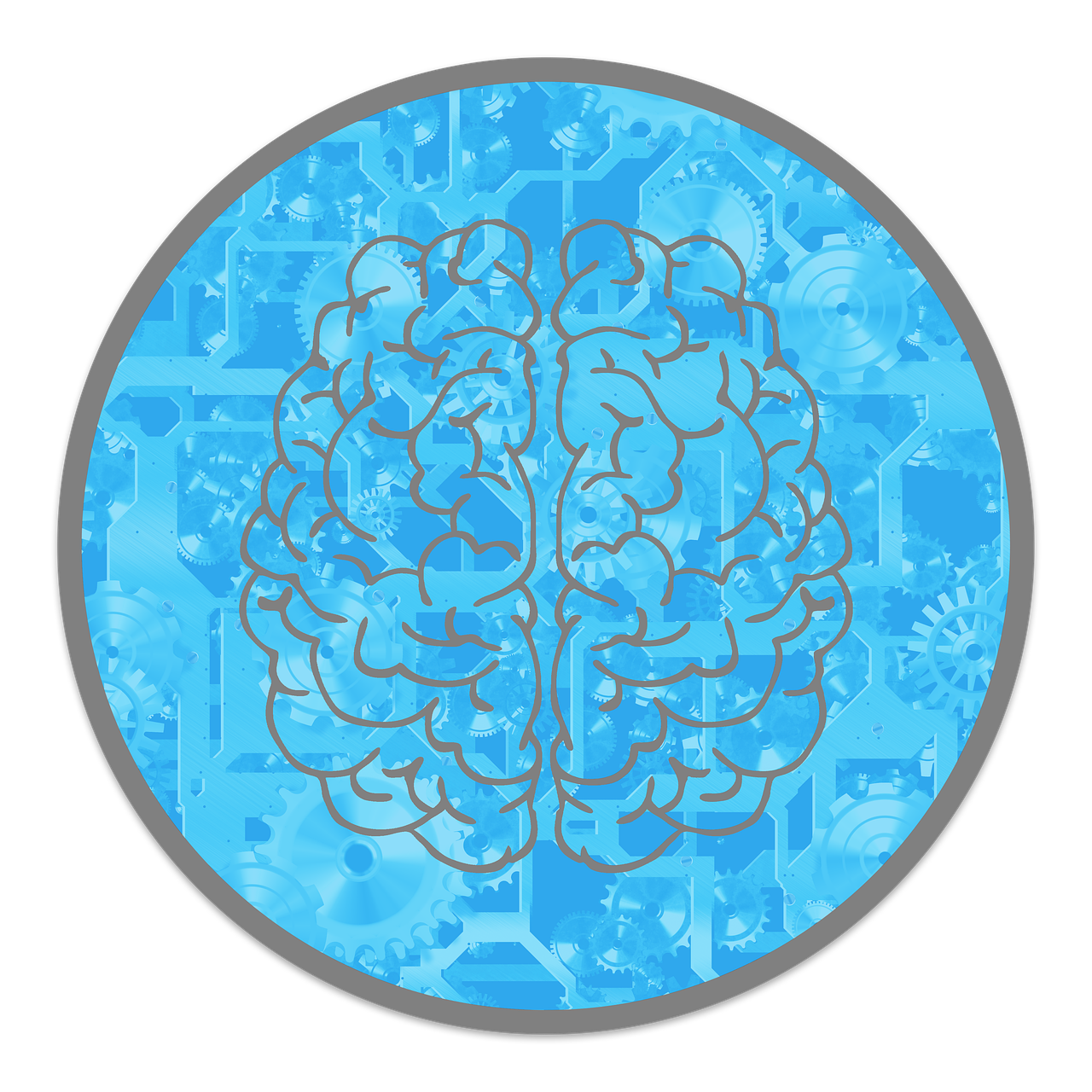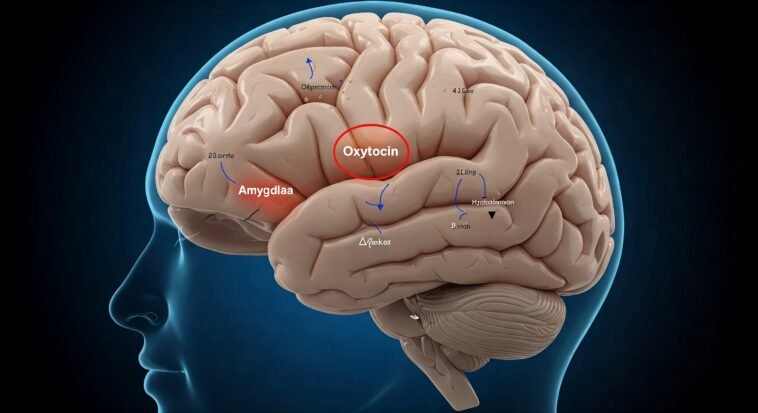
Why do we keep going back to the same coffee shop like it’s Central Perk?
Why do we trust online stores like Amazon more than some of our own relatives?
And why does buying a new iPhone feel oddly emotional?
Blame (or thank) oxytocin—the “love hormone.”
Sure, it’s famous for baby bonding and mushy feelings, but it also makes us trust people and brands.
Yup, your brain doesn’t know the difference between your bestie and your favorite sneaker company.
Smart brands like Nike and Apple know how to trigger oxytocin to build trust, loyalty, and repeat business.
They make us feel seen, safe, and understood—kind of like a rom-com, but with more product placement.
What is Oxytocin, and Why Does It Matter in Marketing?
Oxytocin is basically your brain’s trust fairy.
It’s a neurochemical brewed in the hypothalamus and dropped into your system by the pituitary gland.
Scientists call it the “love hormone” because it helps us bond, trust, and feel warm-and-fuzzy about people—and yes, brands too.
Dr. Paul Zak (aka the godfather of Neuroeconomics) found that when oxytocin levels go up, so does trust.
But here’s the plot twist: you don’t need hugs or heart-to-hearts to trigger it.
Oxytocin also spikes when people connect with emotional stories, shared values, or even clever ad campaigns.
Why should marketers care? Because oxytocin is the secret ingredient behind:
- Building trust (the good kind, not the sketchy influencer promo kind)
- Creating emotional memories that stick—like that first Apple unboxing
- Encouraging social sharing and word-of-mouth (hello, viral TikToks)
- Inspiring loyalty and repeat purchases (Starbucks Gold Members, anyone?)
Long story short: when your brand experience gives people the emotional feels, oxytocin shows up—and suddenly your audience isn’t just buying a product, they’re falling for your brand.

How Brands Trigger Oxytocin: Real-World Strategies That Work
Want to turn casual customers into loyal superfans?
You’ll need more than coupons and catchy taglines.
To get people emotionally hooked on your brand, you’ve gotta charm their brain chemistry—specifically, oxytocin.
Here are five real-world, science-backed ways brands crank up the “trust hormone” and build long-term loyalty:
1. Tell stories that hit people in the feels
Forget boring product specs—great brands make you feel something.
Think Pixar meets Mad Men.
- Example: Coca-Cola’s holiday ads or Dove’s “Real Beauty” campaign. They’re not selling soda or soap—they’re selling joy, confidence, and real human moments.
- Why it works: Emotional stories light up the same parts of the brain that drive bonding and trust. Cue oxytocin.
- Pro tip: Use heartfelt customer stories, behind-the-scenes peeks, or real-life challenges. Your brand isn’t the hero—your people are.
2. Creating moments of surprise and delight
People remember how you make them feel—especially when you catch them off guard with kindness.
- Example: Zappos sending surprise upgrades or handwritten thank-you notes. Simple, low-cost, high-impact.
- Why it works: Unexpected good vibes = oxytocin + dopamine = customers who stick around.
- Pro tip: Add random acts of awesome—birthday treats, thank-you gifts, or just a funny meme at the right moment.
3. Make it personal (but not creepy)
People want to feel seen—not stalked.
When done right, personalization shows you get them.
- Example: Spotify Wrapped or Netflix’s eerily accurate recommendations. It’s like your playlist has a PhD in your vibe.
- Why it works: Personalized experiences trigger emotional closeness, aka a chemical trust hug.
- Pro tip: Go beyond using someone’s name in emails. Tailor content, products, or services based on what they actually like or do.
4. Stand for something bigger than your bottom line
Brands with a purpose make people feel like part of something bigger—like joining the Rebel Alliance (but with eco-friendly packaging).
- Example: Patagonia doesn’t just sell jackets—they lead climate activism and walk the talk.
- Why it works: Shared values and meaningful missions deepen emotional ties and foster community.
- Pro tip: Choose a cause you care about—and prove it with action, not just hashtags. Authenticity is the new ROI.
5. Build a community, not just a customer list
Nothing builds oxytocin like community belonging.
Brands that create spaces for users to share Want to trigger oxytocin on demand?
Create spaces where your customers can connect with each other.
- Example: GoPro makes their users the stars with user-submitted content. It’s not just a brand—it’s a tribe.
- Why it works: Belonging to a group releases oxytocin. Social sharing = bonding = loyalty.
- Pro tip: Run hashtag campaigns, feature user stories, or host events (online or IRL). Let your customers co-create the brand story.

Case Study: How Apple Cultivates Loyalty with Oxytocin Cues
Apple fans don’t just buy iPhones—they line up at dawn, cheer during product reveals, and treat the Genius Bar like a sacred pilgrimage.
So what’s Apple’s secret sauce?
Spoiler: It’s not just aluminum unibodies and Retina displays—it’s oxytocin.
Here’s how Apple taps into the brain’s trust-and-love hormone to turn customers into loyal superfans:
Emotional design that sparks joy
Apple products feel good—sleek, smooth, satisfying to hold.
Their design isn’t just pretty; it’s emotionally rewarding.
Every tap, swipe, and unboxing moment is engineered to deliver a dopamine + oxytocin combo punch.
Community identity
Apple doesn’t sell gadgets—they build a lifestyle.
Think: minimalist stores, launch day hype, and fans who treat WWDC like the Super Bowl.
This sense of belonging triggers oxytocin.
People feel like they’re part of something bigger than a brand—they’re in the Apple tribe.
Surprise, delight, and a dash of hype
Every fall, Apple teases new releases like it’s the next Marvel phase.
The build-up releases dopamine (anticipation), and the reveal drops oxytocin (delight).
It’s basically Avengers: Endgame for tech lovers.
Your brain rewards you for being excited and emotionally fulfilled. Apple knows this. They plan for it.
Branding that feels like a movement
“Think Different” wasn’t about RAM or camera specs.
It was about you—the dreamer, the rebel, the creative underdog.
Apple doesn’t pitch features; they pitch identity.
When a brand aligns with how we see ourselves, it activates trust and loyalty.
Oxytocin goes, “Yes, this is my people.”
Apple doesn’t just sell tech—they engineer emotional experiences.
From the feel of the product to the vibe of the brand, they create oxytocin-rich moments that keep customers emotionally hooked.
It’s not magic. It’s marketing meets neuroscience.

How to Measure Emotional Loyalty (And Not Just Metrics)
Tracking clicks and conversions is cool—but if you’re only watching the numbers, you’re missing the feels.
Emotional loyalty—the kind that comes from oxytocin-level brand bonding—isn’t always obvious on a spreadsheet.
But it can be measured.
Here’s how to spot when your audience isn’t just buying—they’re bonding:
Net Promoter Score (NPS):
NPS basically asks, “Would you recommend us to a friend?” If people say “heck yes,” they’re not just satisfied—they’re emotionally invested.
Think of it as your Rotten Tomatoes score for customer love.
Why it works: Recommending a brand taps into trust and personal identity—pure oxytocin territory.
Repeat purchase rate
When customers come back for more (without needing a discount bribe), they’re in it for more than the transaction.
That’s trust. That’s loyalty. That’s brand chemistry.
Example: Think how often people “accidentally” walk into Target for toothpaste and leave with $200 worth of throw pillows.
Customer lifetime value (CLTV)
High CLTV? That’s not just a good ROI—it’s a sign your brand lives rent-free in someone’s heart.
People who stick with you over time are showing loyalty money and oxytocin can buy.
Pro tip: This is your “they bring snacks to the group chat” customer. Treasure them.
Social media sentiment
What are people saying when you’re not in the room?
Social sentiment tools help track positive vibes, community chatter, and how often you’re mentioned (without paying influencers to do it).
If your brand gets the kind of love Swifties give Taylor online, you’re doing something right.
Story-sharing metrics
If customers are sharing your brand stories on their own—testimonials, videos, reviews, memes—you’re not just selling.
You’re connecting. That’s emotional loyalty in its purest form.
Think GoPro clips, Trader Joe’s hauls, or any time someone says “not sponsored, just obsessed.”
Conclusion: Make Loyalty a Feeling, Not Just a Goal
Clicks are cool, but feelings win the game.
The brands people love (like, “tattoo-your-logo-on-my-body” love) are the ones that trigger oxytocin—aka the brain’s trust-and-bonding juice.
Apple, Dove, Zappos—they’re not just selling stuff.
They’re telling emotional stories, surprising customers with kindness, standing for something bigger, and building real communities.
So if you want fans, not just followers, make your marketing feel more like Ted Lasso and less like a hard sell.
People might forget your CTA, but they’ll never forget how your brand made them feel.



